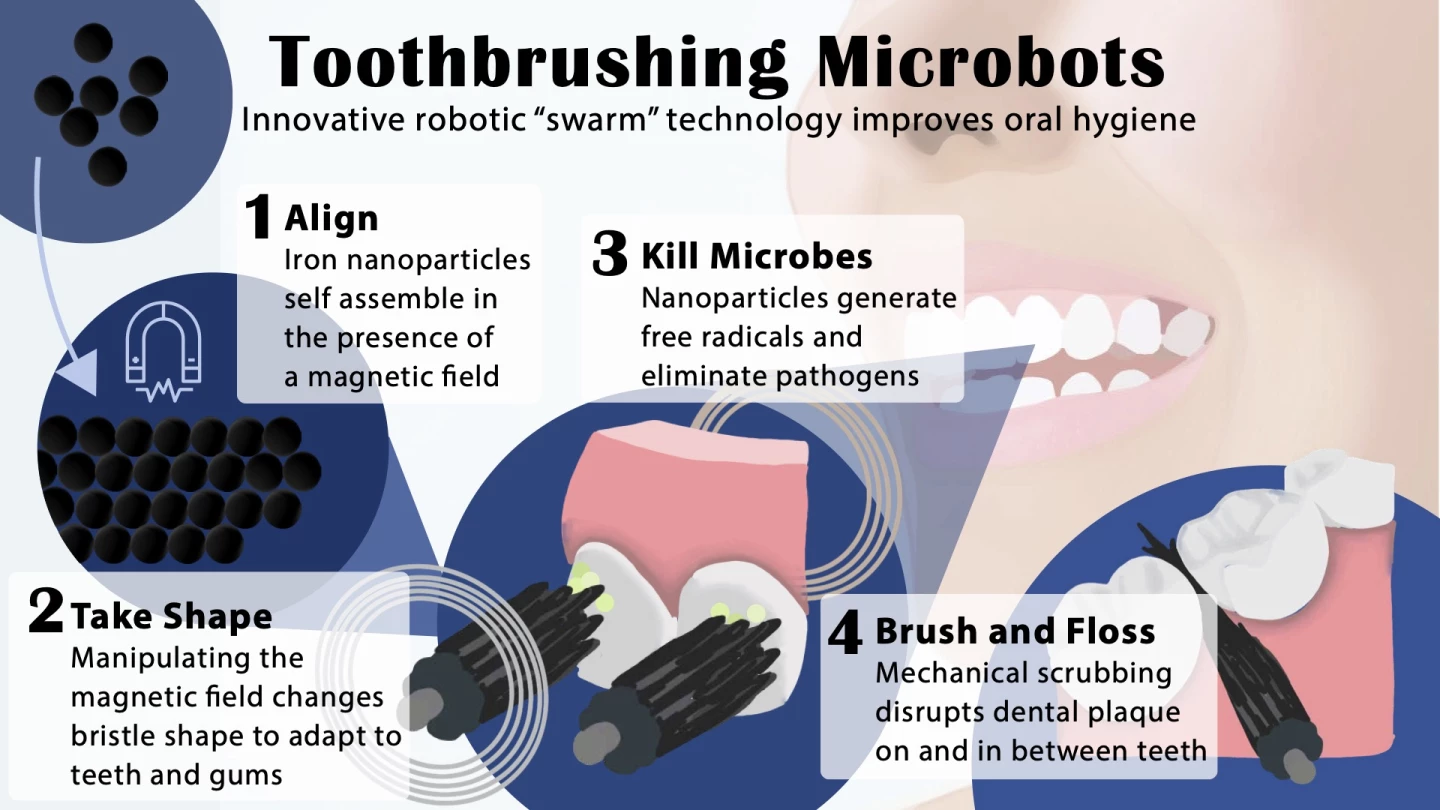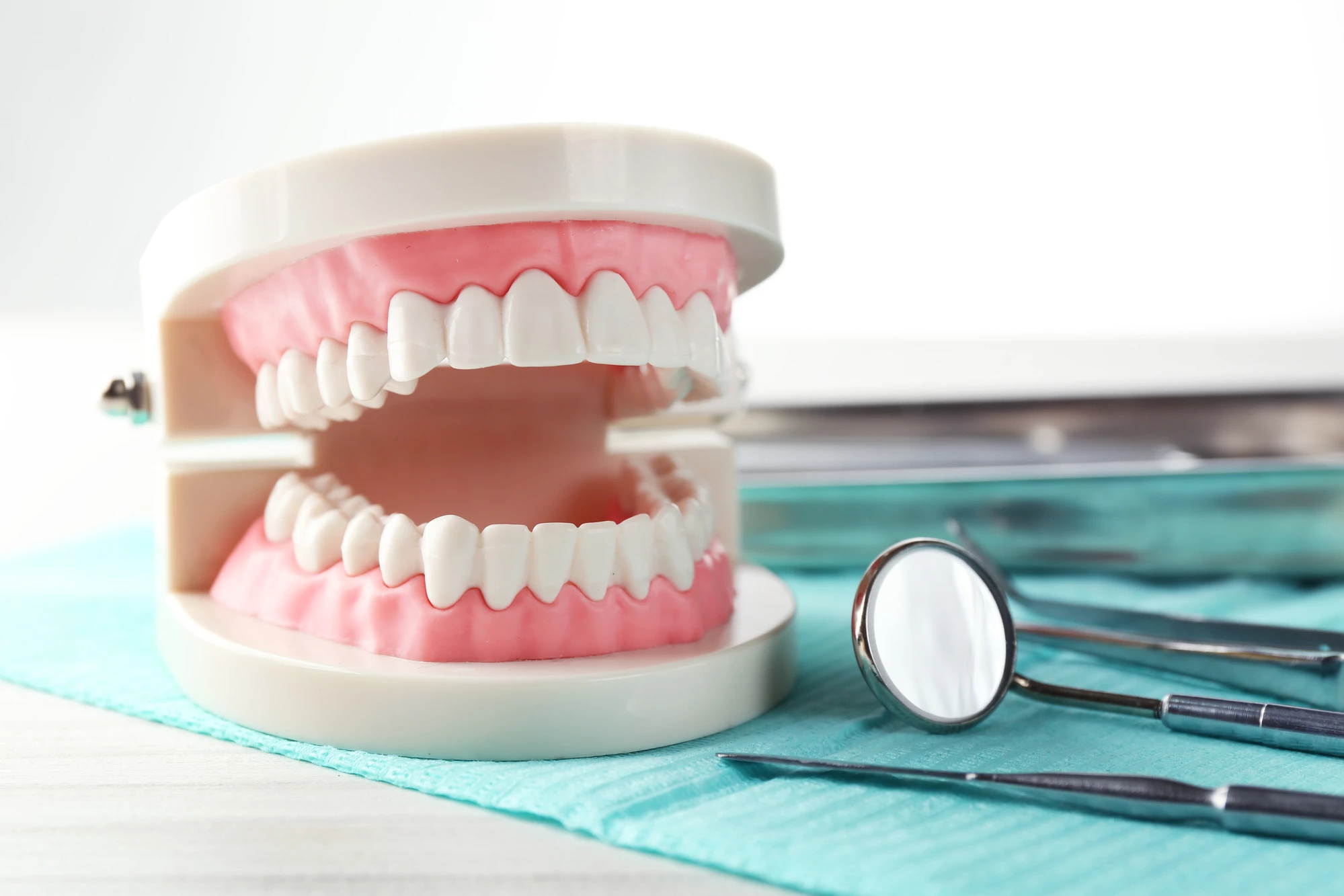Like many menial tasks, there may soon be a way to outsource brushing your teeth to robots. Engineers at the University of Pennsylvania have developed a system of microrobots that can change shape to form bristles or floss. They don’t just brush plaque away, but release antimicrobials to kill bad bacteria.
Brushing and flossing every day can be annoying, and even people who stick to the routine can miss areas and wind up with trouble. Part of the problem is that toothbrushes don’t account for differences in the shape or spacing of different people’s teeth.
The new system solves that issue by effectively shapeshifting. It’s made up of iron oxide nanoparticles, which can be assembled into different formations and controlled using magnetic fields. This way, the particles can be arranged into the shape of bristles to brush plaque from tooth surfaces, or thinner floss-like strands to scrub between teeth.
But these microrobots don’t just clean teeth mechanically. Iron oxide is known to activate hydrogen peroxide, triggering a reaction that produces free radicals that kill bacteria and the sticky biofilms they form on teeth.

The team first tested the system on a flat slab of artificial tooth-like material to get the motions of the microrobots down. Then, they moved on to controlling it over the more realistic terrain of 3D-printed tooth models. Finally, the microrobots were tested on real human teeth, mounted in a device that arranged them in the way they would sit in the mouth.
The tests showed that these microrobots could efficiently remove plaque and biofilms, reducing pathogenic bacteria below detectable levels. The team also showed that they could precisely control the bristle stiffness and length by adjusting the magnetic field, allowing the tips to be made firm enough to clean the teeth but still soft enough to be gentle on gums.
The researchers say that the customizability of this microrobot system could clean people’s teeth better, while its hands-free potential could allow people with reduced fine motor skills to still take care of their oral health.
Exactly what form this system would take in a commercial device remains to be seen, but the researchers are investigating mouth-fitting devices that could be similar to some other rapid tooth-cleaning systems we’ve seen. Other microrobots have been tested for cleaning teeth recently, clearing infections from inside for more effective root canals.
The new research was published in the journal ACS Nano.
Source: University of Pennsylvania





